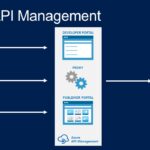In the ever-evolving landscape of employment regulations, the National Labor Relations Board (NLRB) has recently introduced a groundbreaking rule that significantly affects employers. This article delves into the intricacies of the NLRB’s new stance on joint employer status and its implications for businesses.
Decoding Joint Employer Status
Defining the NLRB’s Perspective
The NLRB’s new rule redefines the concept of joint employer status, leaving employers with questions about its practical application. Let’s dissect this pivotal development.
Navigating the Changes
Employers must now adapt to a shifting paradigm in labor relations. The NLRB’s rule brings about modifications in how businesses handle joint employer scenarios, demanding a closer look at their operational structures.
The Implications for Employers
Impact on Business Operations
With the revised rule, employers face the challenge of reassessing their relationships with subcontractors and franchisors. The new criteria set by the NLRB may require adjustments to existing agreements and practices.
Legal Ramifications
Understanding the legal ramifications of the NLRB’s rule is paramount. Employers need to stay abreast of these changes to avoid potential legal pitfalls. Non-compliance can lead to repercussions that may adversely affect the company’s bottom line.
Adapting to Change
Strategies for Compliance
In light of the NLRB’s new rule, proactive measures are essential for employers. Establishing clear communication channels, revisiting contracts, and seeking legal counsel can help businesses navigate the evolving landscape while staying compliant.
Employee Relations in Focus
The revised rule also emphasizes the importance of fostering positive employee relations. Employers should prioritize maintaining open lines of communication and addressing concerns promptly to mitigate potential issues related to joint employer status.
Conclusion: A New Era in Labor Relations
Moving Forward
As employers grapple with the implications of the NLRB’s new rule, strategic adaptation is key. Staying informed, implementing proactive measures, and fostering positive employee relations are pivotal steps in navigating the changing dynamics of joint employer status.
The NLRB’s rule is a significant milestone in the realm of labor relations. Employers must seize the opportunity to understand, adapt, and thrive in this new era. By doing so, businesses can fortify their foundations and ensure compliance in an ever-shifting regulatory landscape.









